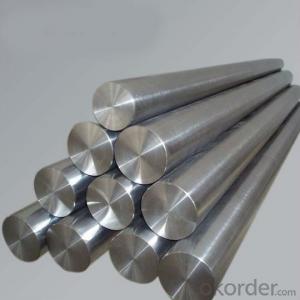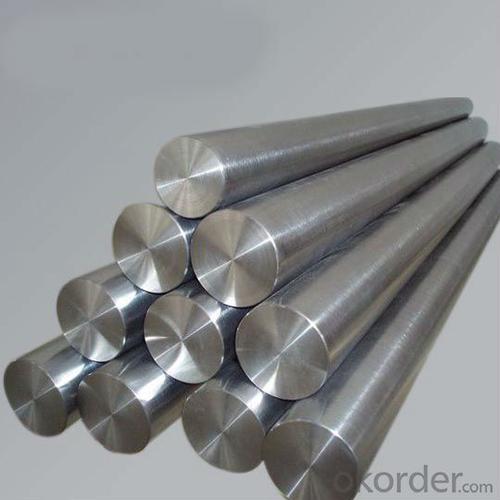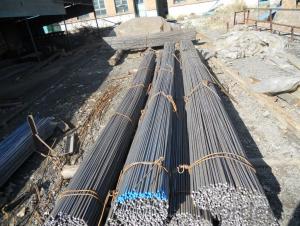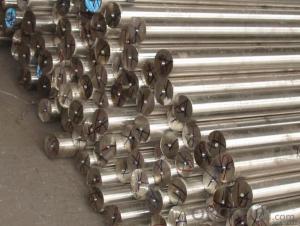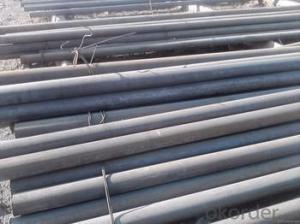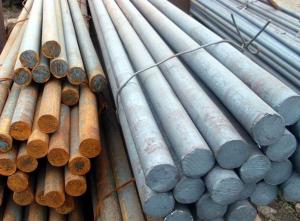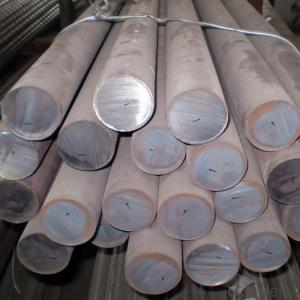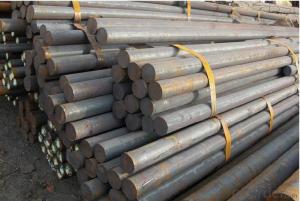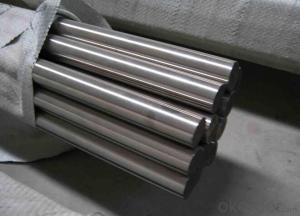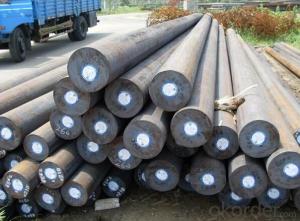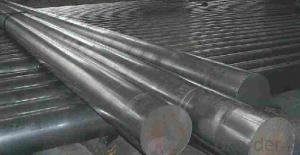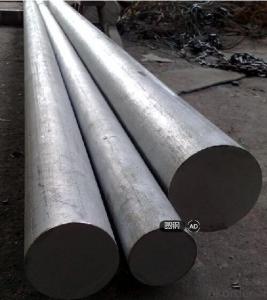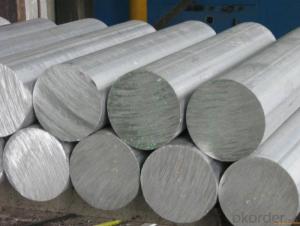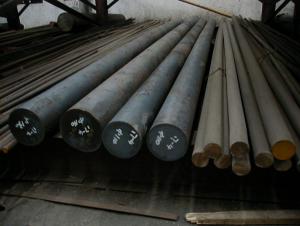Alloy Steel Round Bar Steel Material 1..3343
- Loading Port:
- Dalian
- Payment Terms:
- TT OR LC
- Min Order Qty:
- 5 m.t.
- Supply Capability:
- 1000 m.t./month
OKorder Service Pledge
OKorder Financial Service
You Might Also Like
Specification
Alloy Steel Round Bar Steel Material 1..3343
Quick Details
Standard: AISI, ASTM, BS, DIN, GB, JIS
Model Number:W6Mo5Cr4V2/M2/skh9/1.3343
Technique: Cold Drawn
Application: Tool Steel Bar
Alloy Or Not: Is Alloy
Special Use: Mold Steel
Type: Alloy Steel Bar
Cold drawn bar: 2.2-14.0mm
Hot rolled plate: 6.5-16.0mm
Hot rolled circular plate: 8-80mm
Precisely forged bar: 81-250mm
Chemical Composition(GB)%
Standard | C | Si | Mn | P | S | Cr | W | Mo | V |
W6Mo5Cr4V2 | 0.55-0.65 | ≤0.40 | ≤0.60 | ≤0.030 | ≤0.020 | 3.70-4.30 | 6.00-7.00 | 4.50-5.50 | 1.70-1.10 |
M2 | 0.78-0.88 | 0.20-0.45 | 0.15-0.40 | ≤0.030 | ≤0.030 | 3.75-4.50 | 5.50-6.75 | 4.50-5.50 | 1.75-2.20 |
Heat Treatment
Item | Temperature℃ | Hardness |
Anneal | 840-860 | ≤255HB |
Quenching | 1150-1180 | ≥60HRC |
Tempering | 560-580 | ≥60HRC |
Characterstics
Good thermal plasticity |
High abrasion resistance and red hardness |
Applications:
Used for various tools,large thermoplastic forming cutting tools,abrasion resistance components operating under high load such as cold extrusion dies
Picture
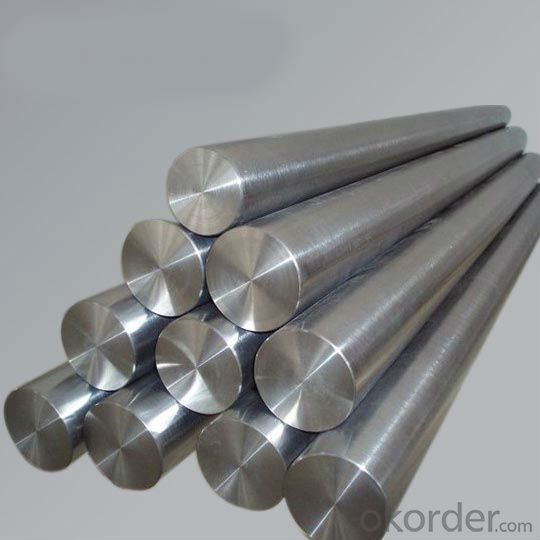
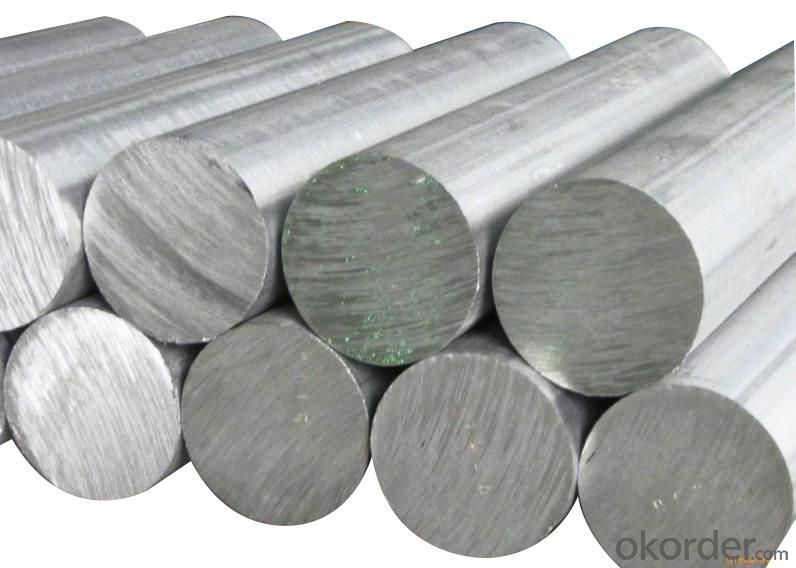
- Q: What is the difference between a smooth and a ribbed steel round bar?
- A smooth steel round bar and a ribbed steel round bar differ in their surface texture and purpose. A smooth steel round bar has a uniform and even surface without any ridges or indentations. This type of bar is typically used in applications where a smooth and polished appearance is desired, such as in decorative or architectural projects. Smooth bars are also commonly used in machining processes where a smooth surface is required for precision and accuracy. On the other hand, a ribbed steel round bar features raised ridges or ribs along its length. These ribs provide improved grip and traction, making ribbed bars ideal for applications that require a high level of strength and stability. Ribbed bars are commonly used in the construction industry for reinforcing concrete structures such as buildings, bridges, and highways. The ridges on the bar increase the bonding strength between the concrete and the steel, enhancing the overall structural integrity. In summary, the main difference between a smooth and a ribbed steel round bar lies in their surface texture and intended use. While smooth bars are used for their polished appearance and precision machining, ribbed bars are designed to provide enhanced grip and reinforcement in concrete structures.
- Q: How do steel round bars perform in high-pressure applications?
- Steel round bars are known for their exceptional strength and durability, making them highly suitable for high-pressure applications. When subjected to high-pressure conditions, steel round bars exhibit excellent resistance to deformation and maintain their structural integrity. This enables them to withstand the intense forces and maintain their shape, ensuring the safety and reliability of the application. Steel round bars are often used in high-pressure applications such as hydraulic systems, oil and gas pipelines, aerospace components, and high-pressure vessels. Their robust nature allows them to handle the extreme pressures experienced in these applications without failure. The high tensile strength of steel ensures that the bars do not buckle or collapse under pressure, providing the necessary support and stability required for such demanding environments. Additionally, steel round bars possess excellent corrosion resistance properties, which is crucial in high-pressure applications. They can withstand exposure to harsh chemicals, moisture, and other corrosive elements, preventing rusting or degradation over time. This corrosion resistance ensures the longevity and reliability of the steel round bars in high-pressure environments, reducing the risk of premature failure. Furthermore, steel round bars offer versatility in terms of grades and alloys, allowing for customization to meet specific high-pressure requirements. Different grades of steel, such as carbon steel, alloy steel, or stainless steel, can be utilized based on the application's demands. This versatility ensures that the steel round bars can be tailored to provide optimal performance and meet the specific pressure and temperature requirements of the application. In conclusion, steel round bars excel in high-pressure applications due to their exceptional strength, durability, and corrosion resistance properties. Their ability to withstand intense forces and maintain their shape makes them a reliable choice for various industries, including hydraulic systems, oil and gas pipelines, aerospace, and high-pressure vessels. By utilizing steel round bars, companies can ensure the safety, reliability, and longevity of their high-pressure applications.
- Q: What are the advantages of using mild steel round bars?
- There are several advantages of using mild steel round bars. Firstly, mild steel is a cost-effective material, making it an economical choice for various applications. Secondly, mild steel round bars have good weldability, making them easy to join and fabricate into different shapes and structures. Additionally, mild steel round bars offer excellent strength and durability, making them suitable for construction projects and other heavy-duty applications. Furthermore, mild steel has good resistance to corrosion, which enhances its longevity and reduces the need for maintenance. Lastly, mild steel is readily available and widely used, allowing for easy sourcing and compatibility with existing materials and equipment.
- Q: Can steel round bars be bent?
- Yes, steel round bars can be bent. The flexibility of steel allows it to be shaped and manipulated into various forms, including bending round bars into desired angles or curves.
- Q: What are the different surface defects that can be found in steel round bars?
- There are several surface defects that can be found in steel round bars. These defects can vary in severity and can have an impact on the overall quality and performance of the steel. Some common surface defects include: 1. Scale: Scale refers to the thin, flaky layer of iron oxide that forms on the surface of steel during the manufacturing process. It can appear as a rough, scaly texture and may cause issues with adhesion or coating application. 2. Pitting: Pitting is the formation of small holes or depressions on the surface of the steel. It can be caused by corrosion, contamination, or uneven heating during the manufacturing process. Pitting can weaken the structural integrity of the steel and increase the likelihood of failure. 3. Scratches: Scratches are superficial marks or cuts on the surface of the steel. They can occur during handling, transportation, or processing. While small scratches may not significantly affect the performance of the steel, deep or extensive scratches can create stress concentrations and reduce the strength of the material. 4. Cracks: Cracks are linear fractures that can occur on the surface of the steel. They can be caused by excessive cooling, improper heat treatment, or mechanical stress. Cracks can propagate and lead to catastrophic failure if not detected and addressed. 5. Decarburization: Decarburization is the loss of carbon content on the surface of the steel due to exposure to high temperatures or improper heat treatment. It can result in a softer and weaker surface layer, reducing the material's strength and hardness. 6. Laminations: Laminations are layers or separations within the steel round bar that can occur due to improper rolling or manufacturing processes. These can weaken the material and reduce its load-bearing capacity. 7. Inclusions: Inclusions are non-metallic impurities or foreign substances that are trapped within the steel during the manufacturing process. They can include oxides, sulfides, or other debris. Inclusions can act as stress concentrators and reduce the material's resistance to cracking and deformation. Detecting and addressing these surface defects is crucial to ensure the quality and reliability of steel round bars. Various inspection techniques such as visual examination, ultrasonic testing, magnetic particle testing, or dye penetrant testing can be employed to identify and assess the severity of these defects.
- Q: Can steel round bars be used in the production of agricultural equipment?
- Agricultural equipment production can benefit from the use of steel round bars. The manufacturing industry often relies on steel due to its strength, durability, and versatility. To withstand the challenges of farming, agricultural machinery like plows, harrows, cultivators, and sprayers require robust components. Steel round bars offer a solution, as they can be used to create axles, shafts, handles, and structural supports for these machines. The high tensile strength of steel ensures that the equipment can handle heavy loads and repetitive use, which are common in agriculture. Moreover, steel can be easily welded, machined, and shaped into various forms and sizes, making it suitable for a wide range of agricultural equipment applications. In conclusion, steel round bars are both reliable and cost-effective for agricultural equipment production.
- Q: Can steel round bars be anodized?
- Steel round bars cannot be anodized as anodizing is exclusively tailored for aluminum and its alloys. This process entails generating an oxide layer on the metal's surface, offering improved corrosion resistance and decorative possibilities. In contrast, steel lacks the ability to form a stable oxide layer like aluminum, thus precluding anodization. Nevertheless, alternative surface treatment alternatives, such as galvanizing or powder coating, can be employed for steel, yielding comparable advantages.
- Q: What are the different types of steel round bar surface treatments used in the automotive industry?
- In the automotive industry, the most common types of steel round bar surface treatments used are galvanization, electroplating, and powder coating. Galvanization involves coating the steel with a layer of zinc to protect it from corrosion. Electroplating is a process where a thin layer of another metal, such as chrome or nickel, is applied to the steel surface for enhanced aesthetics and protection. Powder coating, on the other hand, involves applying a dry powder to the steel surface and then curing it under high heat to create a durable and attractive finish. These surface treatments help improve the durability, appearance, and overall performance of steel round bars used in automotive applications.
- Q: Are steel round bars suitable for bicycle frame applications?
- Yes, steel round bars are suitable for bicycle frame applications. Steel is a commonly used material for bicycle frames due to its strength, durability, and ability to absorb vibrations. Round bars provide a strong and rigid structure, allowing for a stable and reliable frame that can withstand the stresses and strains of regular use.
- Q: What are the advantages of using titanium-alloy steel round bars?
- The advantages of using titanium-alloy steel round bars include their exceptional strength-to-weight ratio, excellent corrosion resistance, and high temperature resistance. Additionally, titanium-alloy steel round bars offer improved durability, better fatigue resistance, and are suitable for various industries such as aerospace, automotive, and medical, where lightweight and high-performance materials are required.
Send your message to us
Alloy Steel Round Bar Steel Material 1..3343
- Loading Port:
- Dalian
- Payment Terms:
- TT OR LC
- Min Order Qty:
- 5 m.t.
- Supply Capability:
- 1000 m.t./month
OKorder Service Pledge
OKorder Financial Service
Similar products
Hot products
Hot Searches
Related keywords
